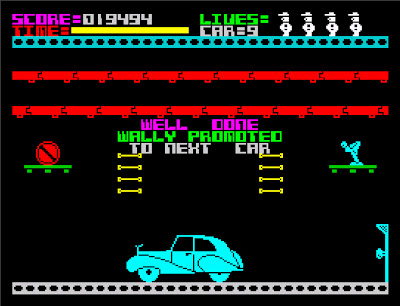Daley Thompson’s Decathlon is Ocean Softwares take on Konami’s acclaimed Track & Field arcade game. Thompson was popular at the time having won gold medals in the 1980 and 1984 Olympic Games.
The game came on a cassette tape with 5 events on each side. In addition to the two run / one action button controls of Track & Field it could also be controlled by furiously waggling your joystick (ahem), and was famous for wrecking many in the process.
Each of the ten events has a qualifying criterion and you lose a ‘life’ if you fail to meet it. You have three lives. If you get through the 5 events the qualifying gets tougher the next go round. Nine of the ten events involve alternately hitting the run keys as fast as possible and then pressing the action button at the appropriate time to adjust jump/throwing angles etc. The exception is the 1500 metres where you need to juggle speed with energy to get the best time.
Daley Thompson’s Decathlon is one of the earliest and still one of the best sports games on the Spectrum. The graphics and animation are functional and fine for the time, if a little flickery in places. The sound is limited to spot effects such as the crowd cheering, although there are a couple of nifty (for the Spectrum) tunes including a version of the Chariots of Fire theme on the podium screen. The main downside is that only 5 events could be fitted into the Spectrum’s 48k memory at once so the two sides of the tape are effectively separate games.
 |
| This game has four more events than Track & Field, but no two player option. |
















